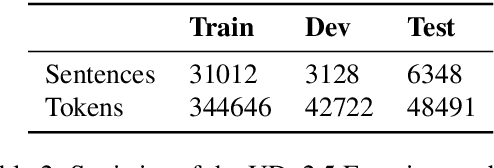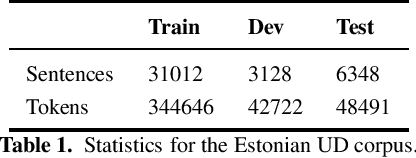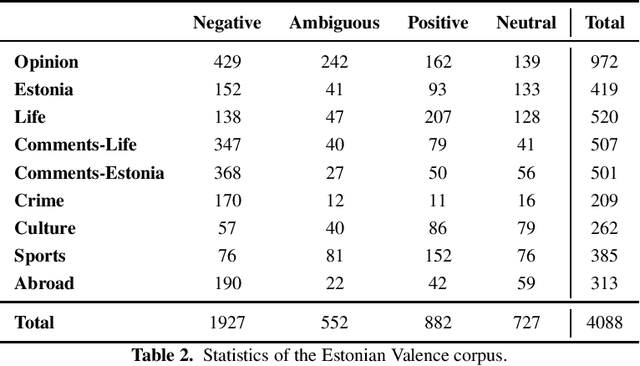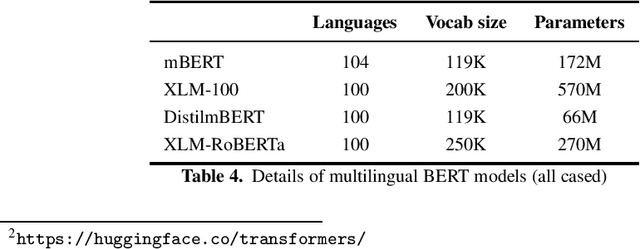Claudia Kittask
EstBERT: A Pretrained Language-Specific BERT for Estonian
Nov 09, 2020



Abstract:This paper presents EstBERT, a large pretrained transformer-based language-specific BERT model for Estonian. Recent work has evaluated multilingual BERT models on Estonian tasks and found them to outperform the baselines. Still, based on existing studies on other languages, a language-specific BERT model is expected to improve over the multilingual ones. We first describe the EstBERT pretraining process and then present the results of the models based on finetuned EstBERT for multiple NLP tasks, including POS and morphological tagging, named entity recognition and text classification. The evaluation results show that the models based on EstBERT outperform multilingual BERT models on five tasks out of six, providing further evidence towards a view that training language-specific BERT models are still useful, even when multilingual models are available.
Evaluating Multilingual BERT for Estonian
Oct 01, 2020



Abstract:Recently, large pre-trained language models, such as BERT, have reached state-of-the-art performance in many natural language processing tasks, but for many languages, including Estonian, BERT models are not yet available. However, there exist several multilingual BERT models that can handle multiple languages simultaneously and that have been trained also on Estonian data. In this paper, we evaluate four multilingual models---multilingual BERT, multilingual distilled BERT, XLM and XLM-RoBERTa---on several NLP tasks including POS and morphological tagging, NER and text classification. Our aim is to establish a comparison between these multilingual BERT models and the existing baseline neural models for these tasks. Our results show that multilingual BERT models can generalise well on different Estonian NLP tasks outperforming all baselines models for POS and morphological tagging and text classification, and reaching the comparable level with the best baseline for NER, with XLM-RoBERTa achieving the highest results compared with other multilingual models.
 Add to Chrome
Add to Chrome Add to Firefox
Add to Firefox Add to Edge
Add to Edge